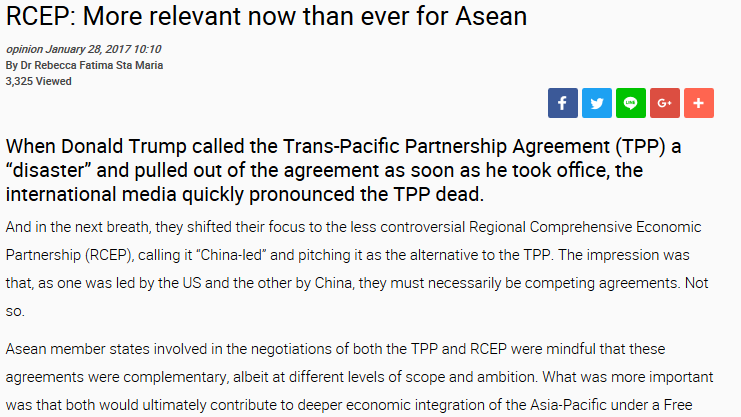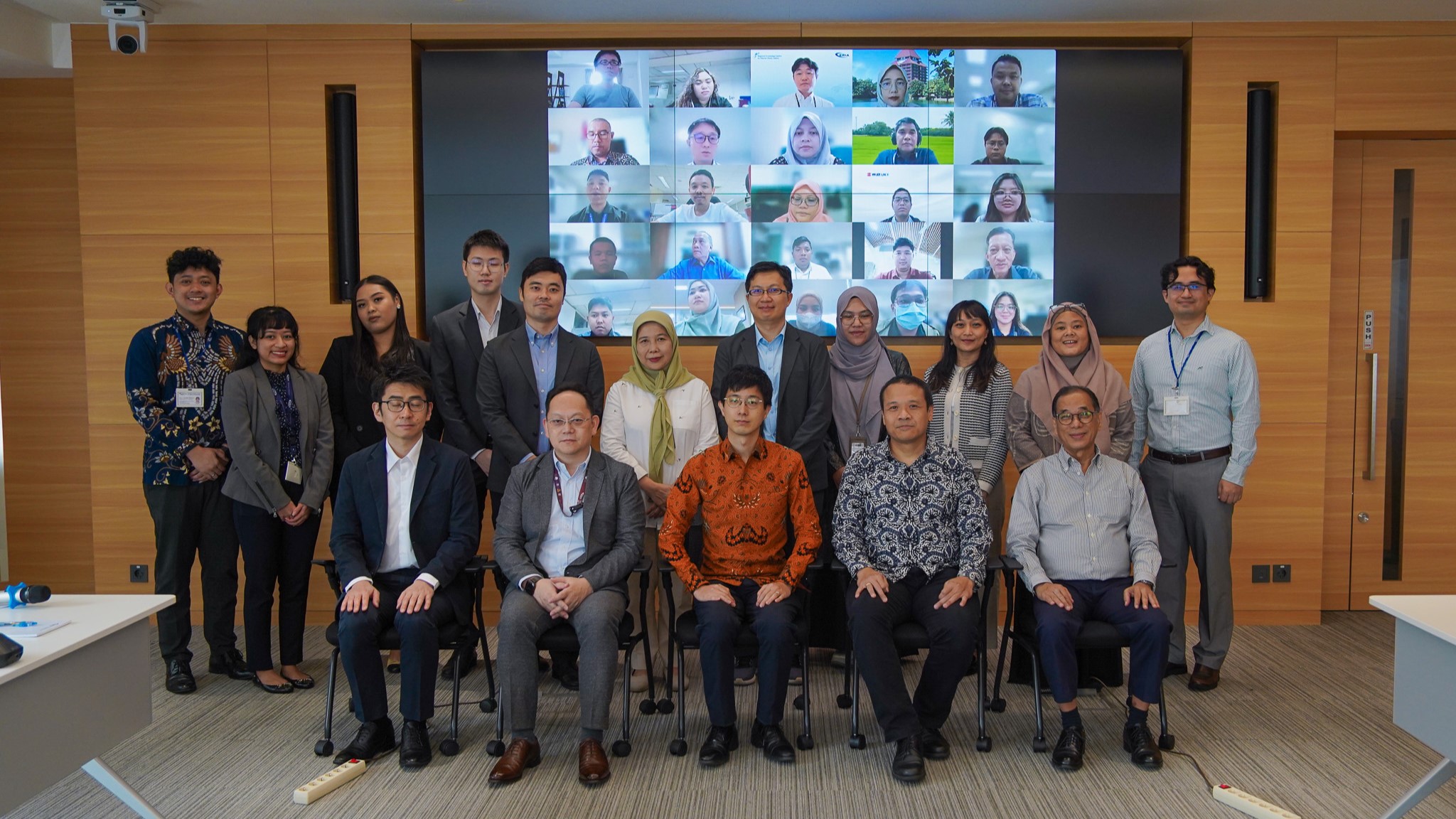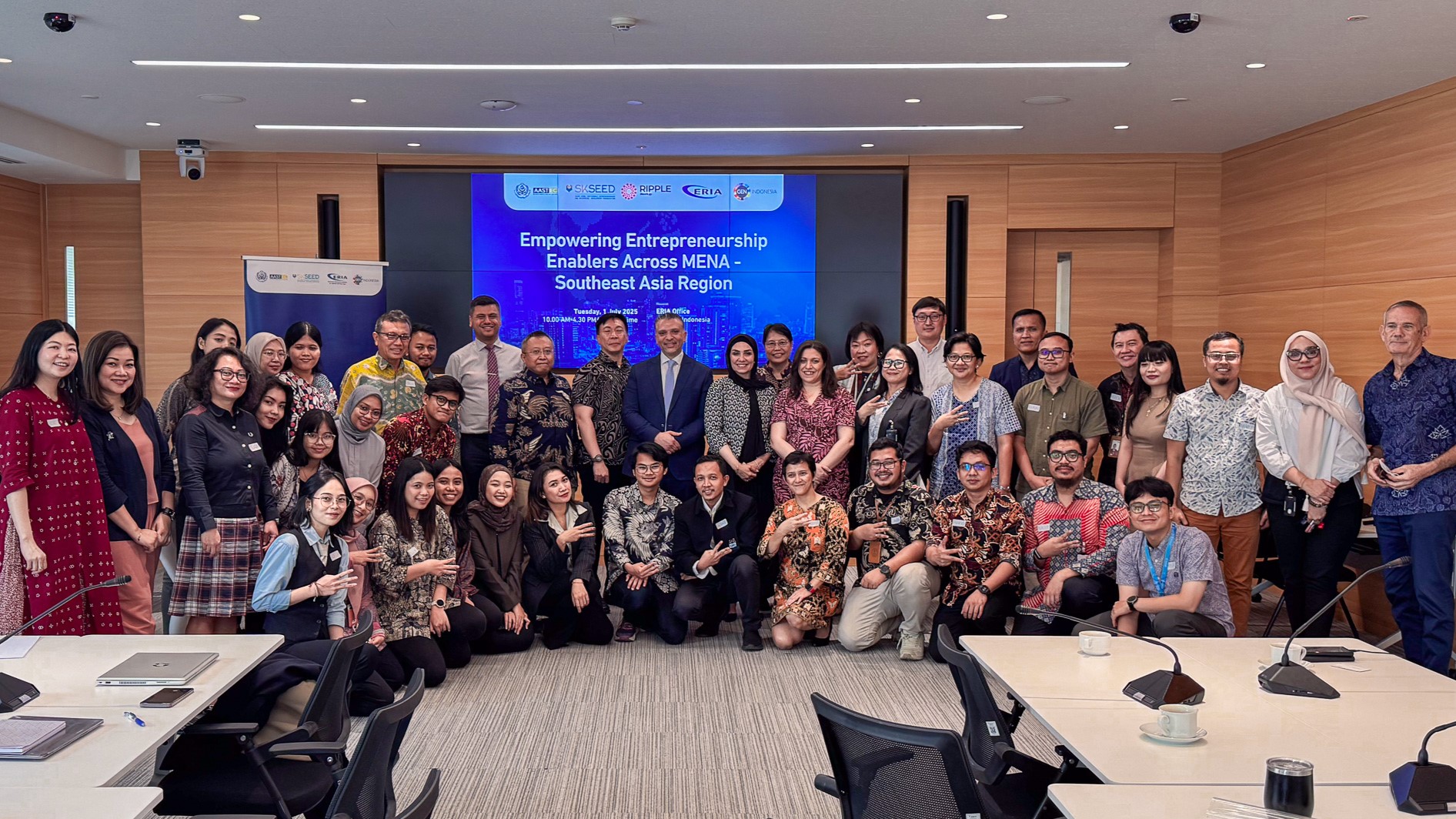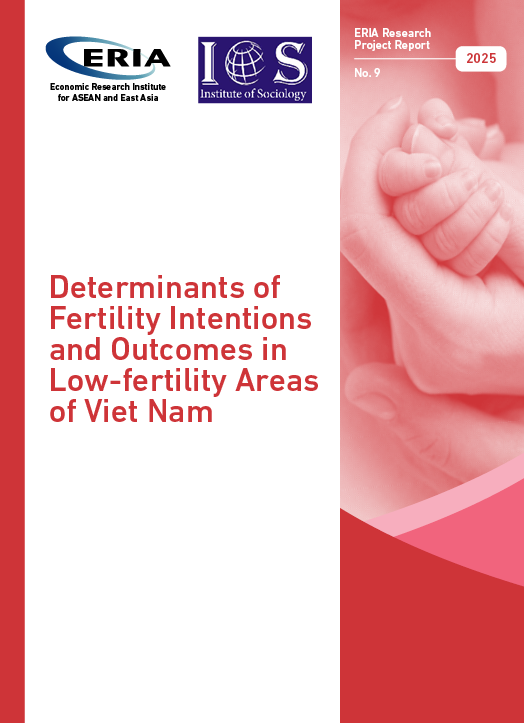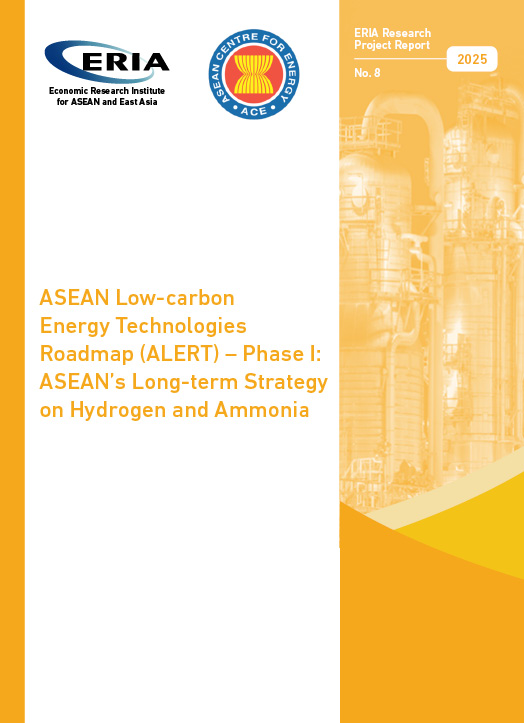Opinion Piece - RCEP: More Relevant Now Than Ever for ASEAN
Date:
28 January 2017Category:
In the NewsTopics:
ASEAN, FTA, RCEP, Trade, Trade FacilitationShare Article:
Print Article:
Editor's note: This opinion piece was originally published in Nation Multimedia on 28 January 2017. ERIA's Senior Policy Fellow Dr Rebecca Fatima Sta Maria provided commentary.
When Donald Trump called the Trans-Pacific Partnership Agreement (TPP) a “disaster” and pulled out of the agreement as soon as he took office, the international media quickly pronounced the TPP dead.
And in the next breath, they shifted their focus to the less controversial Regional Comprehensive Economic Partnership (RCEP), calling it “China-led” and pitching it as the alternative to the TPP. The impression was that, as one was led by the US and the other by China, they must necessarily be competing agreements. Not so.
Asean member states involved in the negotiations of both the TPP and RCEP were mindful that these agreements were complementary, albeit at different levels of scope and ambition. What was more important was that both would ultimately contribute to deeper economic integration of the Asia-Pacific under a Free Trade Area of the Asia-Pacific (FTAAP).
After a stuttering start, the FTAAP gained momentum during China’s Apec chairmanship in 2014 when it was decided that work would begin in earnest, with the TPP and RCEP serving as building blocks towards this greater goal.
But even as the study on the FTAAP framework progresses, it appears that an anti-globalisation movement is stirring. We must wait and see if Trump will be able to implement his pledge to deal with China and follow his pullout of the TPP with a withdrawal from the North American Free Trade Agreement (NAFTA).
The TPP signatories should rightly be concerned that any agreement that excludes the US will limit economic gains. But it is in this environment that Asean and its partners must consolidate and work to deepen economic integration in this region. Focus must be on the opportunities that agreements such as RCEP can bring not just to Asean but also to the global economy. As such, it would be in Asean’s interest to step up work on RCEP to ensure its conclusion within the next year.
As this is being done, it would be useful to take on board the valuable outcomes from the TPP. First of all, there are important lessons for public engagement now that the discourse on trade negotiations is under greater scrutiny. Parties must explain RCEP to their publics so that there is an appreciation of its impact and benefits.
Then there is the issue of the Investor-State Dispute Settlement (ISDS). Post-NAFTA, this has been a major criticism against FTAs because of the apparent “power transfer” from the sovereign state to big business. The high-profile suits brought against governments made the ISDS one of the strong causes against the TPP while it was being negotiated. As a result, the final text of the TPP included processes and procedures to safeguard against frivolous suits by businesses. This is in itself a major outcome that needs to be preserved, and perhaps improved upon, in all FTAs and investment agreements.
Another important feature of the TPP is its recognition of the contribution of small and medium enterprises (SMEs). This agreement is perhaps the first to have a dedicated chapter on SME development and cooperation, to ensure that they are integrated into the value and supply chains of the bigger companies.
With the uncertainty around the TPP and an apparent rise in protectionism, Asean can lead the way by using RCEP to keep markets open, deepen economic integration and narrow the development gap among the member states. This is because RCEP is an inclusive agreement that takes on board, in true Asean spirit, the development concerns of its members. The TPP was an agreement among equals, with no special and differential treatment a la the World Trade Organisation (WTO).
Since the RCEP is Asean-initiated, it must provide the leadership to ensure that negotiations move forward expeditiously.
Above all else, this agreement between Asean and its six FTA partners – China, Japan, South Korea, India, Australia and New Zealand – made good business sense. It would create a market that accounts for over 30 per cent of the global economy. More importantly, the potential benefits from Asean’s demographic dividend and its growing middle class are reason enough to move ahead with the RCEP. By consolidating the five Asean+1 FTAs, the “noodle-bowl” effect of the different rules of origin is reduced, even as the focus is on tariff elimination and streamlining of other trade rules.
The RCEP’s challenge for Asean is to balance different ambition levels among the negotiating parties. The more developed members who are also parties to the TPP set this agreement as the benchmark. But at the other end of the spectrum are parties whose levels of development limit what they are willing and able to commit. Moreover, while Asean has FTAs with each of six partners, not all of these six have FTAs among themselves. For example, the RCEP may provide the platform for China, Japan and South Korea to have an indirect FTA just as their trilateral FTA negotiation is stalled.
RCEP is a reflection of Asean’s thoughtful and deliberate process towards economic integration. Asean must lead the way in manoeuvring and navigating through these difficult waters. With success, the RCEP could well be the model for integrating the least developed countries with developing and developed economies. This model may not be equivalent to the “gold standard” that the TPP is espoused to be, but it will provide a clear pathway towards that goal.
